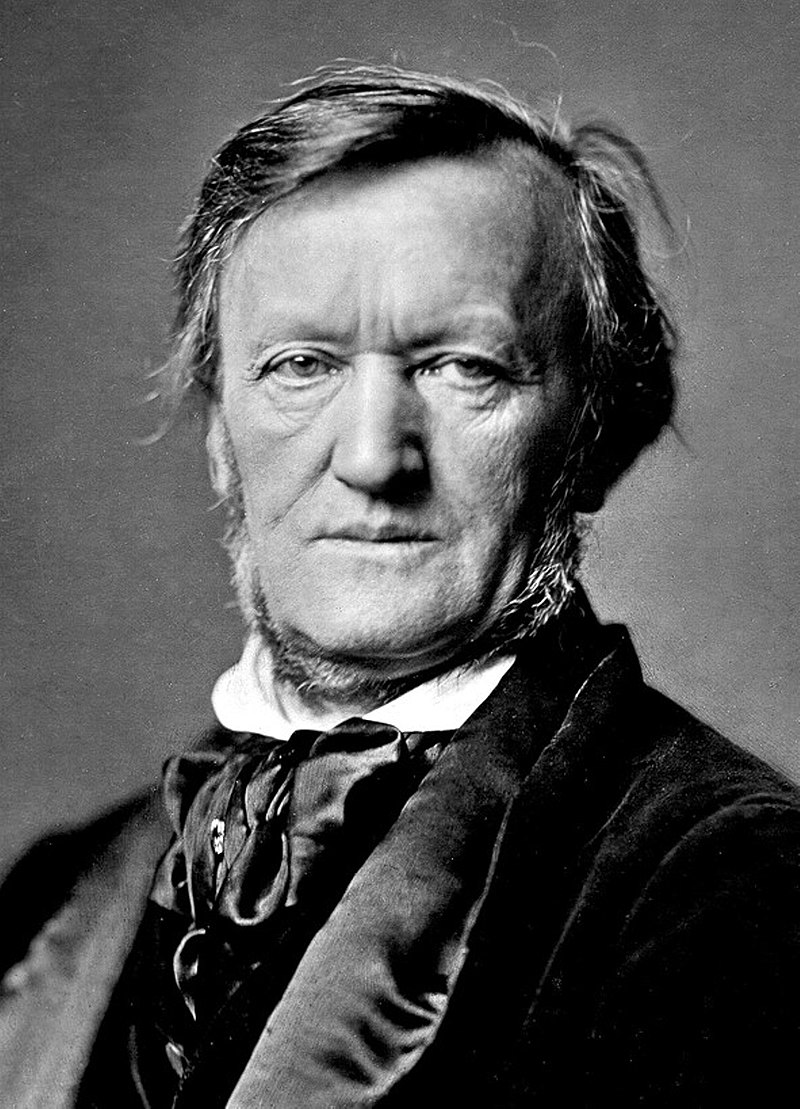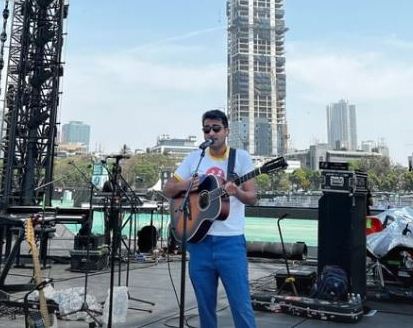The book also influenced Wagner and was planning to work on Buddhist opera called (Die Sieger) The Victors but unfortunately he could not complete it due to ill health…writes Dilip Roy
Nineteenth century Germany saw the emergence of intellectuals both in Arts and Sciences and among them was a Renaissance man called Richard Wagner who was born in one of Germany’s cultural city of Leipzig on 22nd May 1813. Leipzig’s university is also known forits study of Indology like several other major univercities of Germany. It is important to note that Wagner’s brother In law Prof. Herman Brockhaus was the head of Sanskrit faculty under whom many well known Indologists studied among them was a French student called Eugene Burnouf who later published a six hundred page volume called “History of Indian Buddhism.” The book also influenced Wagner and was planning to work on Buddhist opera called (Die Sieger) The Victors but unfortunately he could not complete it due to ill health.
Richard Wagner was a genius who combined all the faculty of Arts. Besides being a composer of operas, he was an architect who supervised the building of his opera house in Bayreuth. He was a dramatist who also wrote libretto for his music drama operas, an essayist, a philosopher in his own right and a prolific writer of prose works and has written on subjects such as “Artwork of the future,” “Pilgrimage to Beethoven,” “Opera and Drama,” “Religion and Art” are recognized as some of his important works. Wagner also invented a brass musical instrument called TUBA which came to be known as “Wagner Tuba” which he commissioned specifically to be used for his four part sixteen hour epic opera called the “Ring of the Nibelung.” In one of Wagner’s major prose works, (Die Wibelungen) World History as Told in Saga written in 1848 in which he clearly states that the entire European race including that of the “Nibelungs” originates from India. This belief was further established by scholars of Indology in 19th century Germany such as Humboldt, Novalis, Schelling and Friedrich Schlegel that Germany’s cultural origins actually stems from India.
Wagner influenced whole generation of composers who came after him such as Bruckner, Holst, Mahler, Schoenberg, Stenhammar, Strauss and Zemlinsky and also went on to influence intellectuals such as Nobel laurates Thomas Mann, G.B. Shaw, W.B. Yeats. The philosopher Friedrich Nietzsche described Wagner as a “volcanic eruption of the total undivided artistic capacity of nature itself,” while Thomas Mann hailed him as “probably the greatest talent in the entire history of European art.” The Russian philosopher and an intellectual writer Leo Tolstoy well known for his writing “War and Peace,” a panoramic epic of the Napoleonic invasion of Russia, was one among the great admirers of Wagner. The 19th century French impressionist artist Pierre-Auguste Renoir did the oil portrait of Wagner on canvas at Palermo in 1882 a year before Wagner’s death in 1883 the painting which now hangs in the famous Louvre museum in Paris. Such was the admiration by Renoir for Wagner.
PHILOSOPHY IN RICHARD WAGNER OPERAS:
Arthur Schopenhauer (1788-1860) in 19th century Germany who revolutionized the concept of philosophical thinking throughout Western Europe and beyond through his epic writing “The World as Will and Interpretation.” The Latin book Oupnekhat (Upanishad) published in 1802 by the French Indologist Anquetil-Duperron was the greatest influence on Schopenhauer’s philosophical thought. He called the opening up of Sanskrit literature “the greatest gift of our century,” and envisaged that the philosophy and knowledge of Upanishad would become the cherished faith of the West. Most noticeable, in the case of Schopenhauer’s work, was the significance of Chandogya Upanishad and Mandukya Upanishad whichare mentioned throughout The World as Will and Interpretation. The composition of Upanishads dates back to 1800 BCE. Schopenhauer also went on to influence philosophers like Friedrich Nietzsche and Ludwig Wittgenstein scientists Albert Einstein and Erwin Schrodinger writers Leo Tolstoy and Hermann Hesse and composers such as Brahms, Mahler, Schoenberg and above all Richard Wagner.In India too there were admirers like Shri Aurobindo, Tagore and Vivekananda who were inspired by Schopenhauer’s philosophy.
Although Wagner was familiar with India’s classical literature like Ramayana, Mahabharata and the works of KALIDASA but the major turning point In Wagner’s creative life was in the mid 1850’s when he embraced both the philosophical writings Arthur Schopenhauer and religious insights of ancient India. Wagner writes in his autobiography (Maine Libe) My life he discovered the philosophy of Artur Schopenhauer by reading his epic work “World as Will and Interpretation” in 1854 he read the book four times and that he was so much elevated, that in the following year he wrote to his composer friend Franz Liszt in 1855 praising “the most oldest and most sacred religion known to mankind” for Wagner, Schopenhauer’s philosophy came to him as a gift from heaven. Schopenhauer’s aesthetics also influenced Wagner’s thinking that music was the ultimate soul of expression which is clearly evident in four of Wagner’s major operas such as Lohengrin, Tristan and Isolde, The Ring of the Nibelungs and Parsifal are clearly consistent with Indian thought. In the Ring Cycle his epic opera to date in it he made use of comparative mythologies that of India, Greece and Germany (Norse) the opera Ring Cycle which is made up of four parts is an allegory, and tells of the struggle for power between the Nibelung dwarfs, the Giants and the Gods.
The first Richard Wagner society was founded in Mannheim, Germany in 1871 since then The International Association of Wagner Societies has more than 26,000 members in 147 societies, belong to International Association of Wagner Societies around the world. The number of groups under the organization’s auspices has expanded considerably in the last fifty years. Today Wagner Societies can be found in all parts of the world including South East Asia in cities like Bangkok, Shanghai and Tokyo also Cape Town in South Africa besides American and European countries. Most of my (D. Roy) articles on Wagner has been published by Australia, New Zealand, London and Scotland Wagner Societies respectively.
Wagner’s opera house in Bayreuth has become a pilgrimage for the Wagner devotees and they congregate from all over the world as the annual festival takes place in the months of July and August and the tickets are sold out months in advance. Bayreuth is also the place where Wagner’s family lived in a house called Wahnfried it also has a library and a museum.
“There are three different types of people who take interest in me, if I am correct: those who know my music, (and they are rare), those who do not know it but love it and those who hate it without knowing it.”
(About the author: Dilip Roy is a researcher on cultural subjects and is a Fellow of Royal Asiatic Society of UK. Mr Roy is an avid collector of non fiction books and classical records among his proud possession is a three CD sets of Upanishads with an introduction by Prof. Julius Lipner and slokas rendered in a classical style by veteran vocalist Pandit Jasraj.)
ALSO READ-HERMANNHESSE: “Siddhartha” and quest for Spiritual Identity













